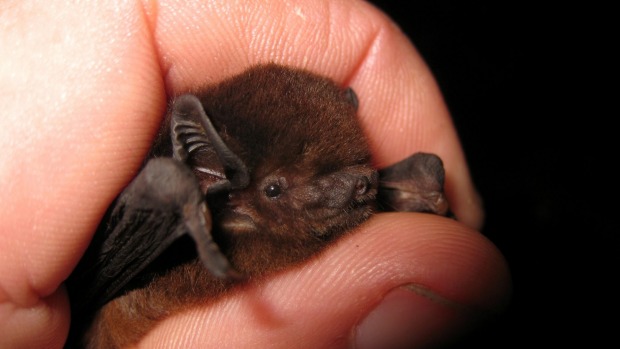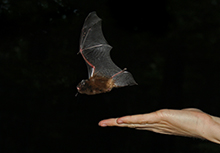An exciting breakthrough occurred recently in Marlborough for Te Hoiere Bat Recovery Project at Pelorus Bridge Scenic Reserve with the capture (and release) of two critically endangered long-tailed bats.
The long-tailed bat population has been declining rapidly in the region, and indeed over all of New Zealand, over the past 40 years with Pelorus Bridge being one of the last remaining populations in the top of the South. The bats, which shelter in the mature podocarp trees during the daytime, can sometimes be seen in the evening flying above the forest or along the Pelorus River / Te Hoiere.
Te Hoiere Bat Recovery Project is a combined effort between Forest and Bird members from Nelson-Tasman and Marlborough and community volunteers, such as Stephen Leitch (SWE’s MD) who has been working on the project for four years, and Mike Cooper (our Operations Manager). Volunteers clock up around 80 hours a month checking 500 traps across 150 hectares – to decrease the populations of rats, stoats, possums and feral cats that threaten the livelihood of the local long-tailed bat population.
What made this capture, tag and release particularly special was that it was the first time many of the volunteers, like Stephen and Mike, had seen these fascinating creatures they’ve been working so hard to protect.
In 2013 Te Hoiere Bat Project received the category award for Landscape and Habitat Enhancement at the Marlborough Environment Awards showcasing its success as a combined community conservation project.
Watch the video outlining more about the breakthrough in the bat recovery project at Pelorus Bridge here: http://www.stuff.co.nz/environment/78161414/
You can find out more about the long-tailed bat or join us in volunteering to help save this endangered creature through Forest and Bird. More help is always needed!






